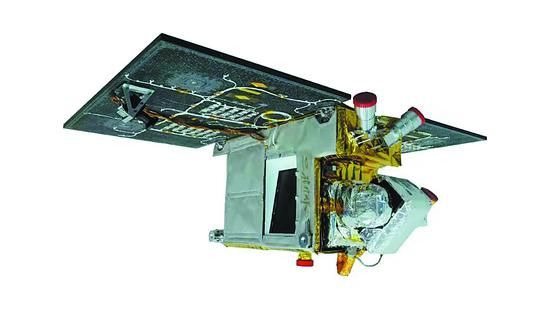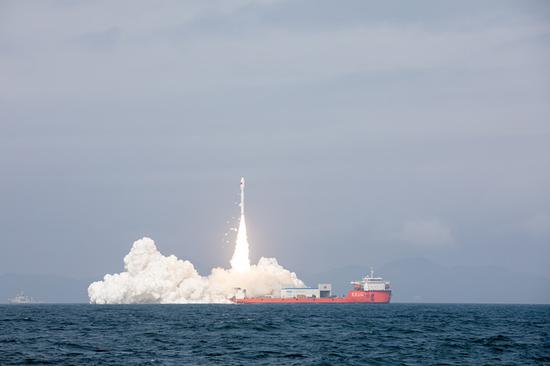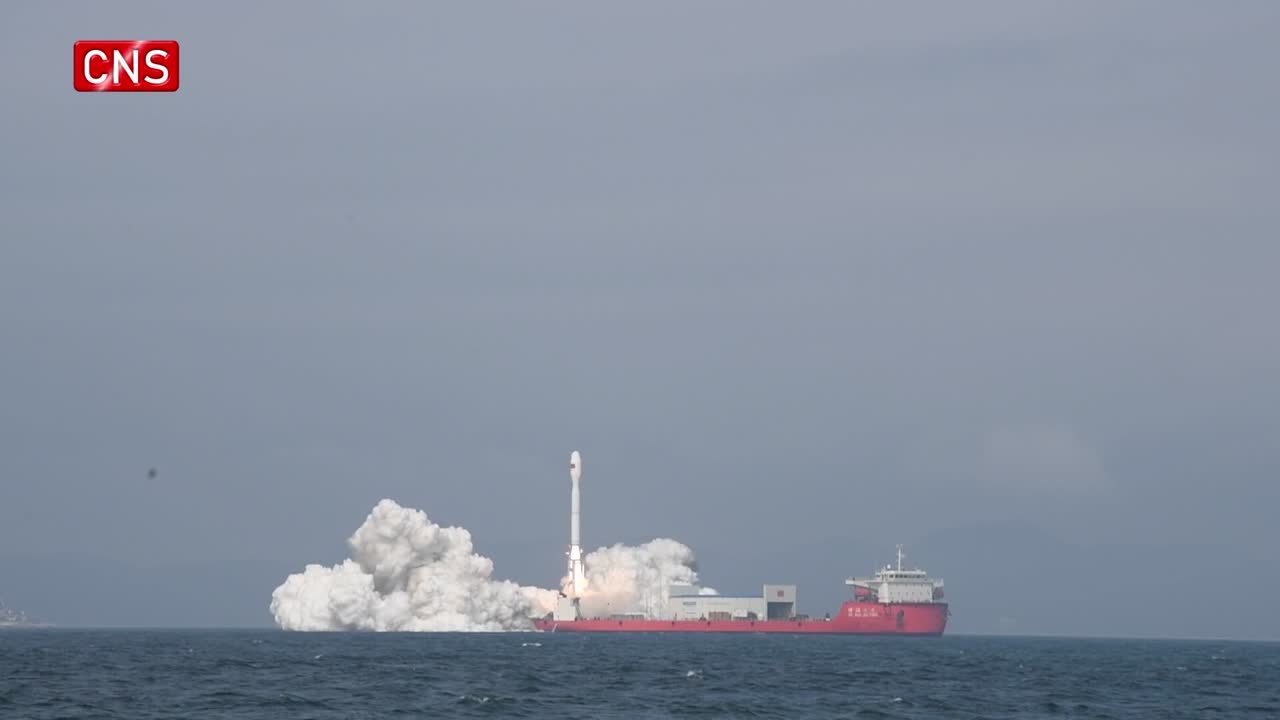
The space-based laser terminal developed by HiStarlink. (Photo provided to China Daily)
China is striving to develop laser communication technology, a key component in space-based information networks.
In a recent development, the country sent its first two-way laser communication terminal into space for technological demonstration purposes.
Developed by HiStarlink, a private laser communication company based in Shenzhen, Guangdong province, the experimental terminal was carried by Xingshidai 20, a satellite jointly built by HiStarlink and AdaSpace, a satellite maker in Chengdu, Sichuan province.
Xingshidai 20 was one of nine satellites launched by a Smart Dragon 3 carrier rocket on Saturday morning off the coast of Yangjiang in Guangdong.
The rocket blasted off at 11:07 am from a launch service ship and soon deployed the satellites into their preset orbital positions.
With a maximum transmission speed of 10 gigabits per second, the laser device is tasked with verifying several key technologies for laser communication, its designers said, explaining that laser communication is characterized by its large transmission capacity, long reach and high level of security.
"Laser communication is an irreplaceable component in any space-based information network. Using laser beams to transmit data between satellites and Earth is extremely difficult and has been a hot topic in the international space community," said Tan Jun, founder and CEO of HiStarlink.
"With our technology, we can make the terminal's transmission speed as fast as 100 gigabits per second, but we decided to make it 10 gigabits per second because that speed is ample enough for users in most situations and comes at a much lower cost.
"In the near future, laser communication terminals will become a pillar of low-orbit internet satellite networks," he said on Friday.
Saturday's mission was the third space launch conducted from the South China Sea. It was also the first time a Smart Dragon 3 launched a foreign satellite — one of the nine satellites, NExSat-1, is an experimental spacecraft built by Egypt's National Authority for Remote Sensing and Space Sciences and Germany's Berlin Space Technologies.
The Smart Dragon 3 is a solid-propellant rocket model. The type is 31 meters tall, has a diameter of 2.65 meters and can carry a liftoff weight of 140 metric tons. It is mainly propelled by a solid-propellant engine, which holds 71 tons of propellant that creates a thrust of 200 tons.
The rocket is capable of sending multiple satellites with a combined weight of 1.5 tons to a typical sun-synchronous orbit at an altitude of 500 kilometers.
Smart Dragon 3 made its maiden flight in December 2022 from a ship in the Yellow Sea, placing 14 satellites into orbit. Its second mission took place in December last year off Yangjiang, becoming the first sea-based rocket launch from the South China Sea.
The Smart Dragon 3 is suitable for clients who wish to quickly launch large numbers of satellites to establish space-based commercial networks as soon as possible, according to Jin Xin, the rocket's project manager.
China has performed 10 sea-based launches — five with the Long March 11 rocket model, three with the Smart Dragon 3, one with the Ceres 1 rocket of Beijing-based private company Galactic Energy, and another with the Gravity 1 of Orienspace, another private company in Beijing.


















































 京公网安备 11010202009201号
京公网安备 11010202009201号